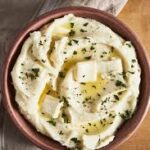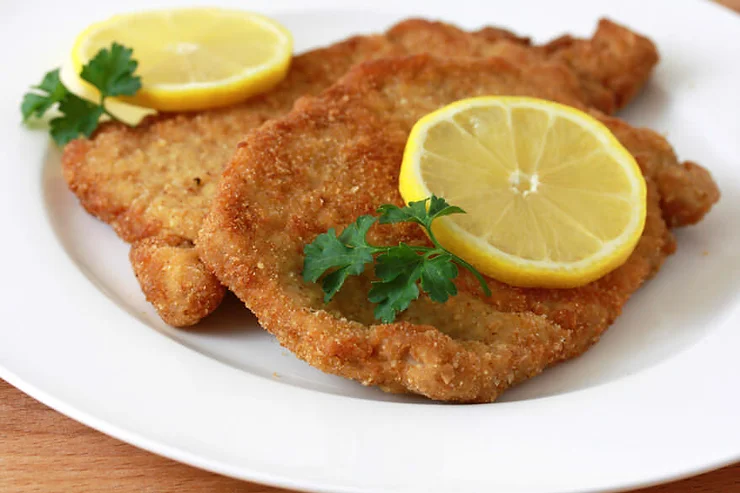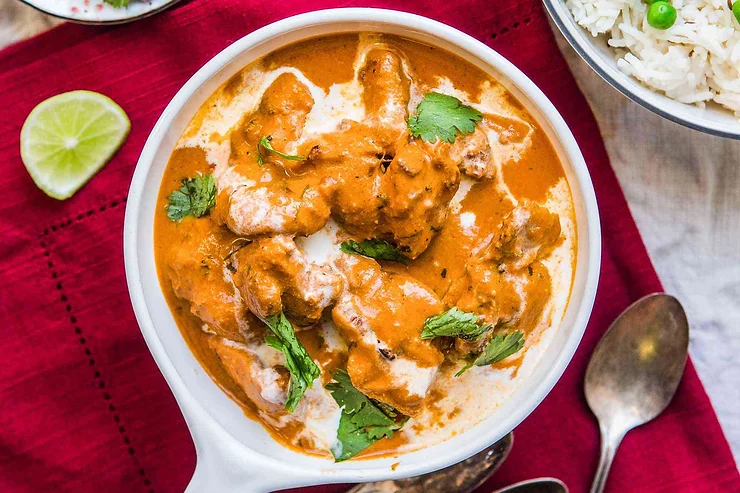Introduction:
Schnitzel is a well regarded meal that people enjoy because of the crispy coating on the outside and the soft and juicy substance on the inside. This dish has its origin from the European continent and it has almost been adopted by almost all continents due to its easiness and the delicious taste. In fact, several aspects related to its history, the main ingredients used, the method of its preparation and its cultural context are worthy of attention.
History of Schnitzel:
Schnitzel dish was first prepared in the 7th century by the Byzantine Empire in which a breaded and fried meat was served. However, the schnitzel as a current dish that we know, particularly the Wiener Schnitzel or the Viennese schnitzel, has strong connections with Austria. There exists a historical veal dish called Wiener Schnitzel which was first recorded in a cookbook in the 19th century and is referred to as part of the culinary heritage of Austria.
Essential Ingredients:
• Meat: Originally, veal is applied for Wiener Schnitze; however, contemporary recipes can use pork, chicken, or turkey meat.
• Bread Crumbs: Dry breadcrumbs that are finely made form the best layer that produces that crispiness.
• Flour: Utilized prior to dipping of meat before the application of egg then bread crumbs.
• Eggs: This is because beaten eggs will help the bread crumbs to stick on the meat.
• Seasonings: For seasoning the meat such products as salt ,pepper and sometimes paprika are used.
• Oil or Butter: For frying the schnitzel to golden perfection.
The Meat of the Matter:
There are many varieties of schnitzel and the type of meat used depends on region or traditions of the specific country:
• Wiener Schnitzel (Viennese Schnitzel): The above is the classic one which is made with veal cutlets. Veal is easily digested yet full of delicious taste, which is why it is ideal for schnitzel. Note: It is very important to know that in Austria and Germany the law does not allow any schnitzel other than veal to be known as “Wiener Schnitzel.
• Schweineschnitzel (Pork Schnitzel): This is a regular cut with a broth and is cheaper compared to the Wiener Schnitzel. Parsed pork cutlets are used instead, and it gives a heartier taste and is more affordable than veal.
• Chicken Schnitzel: Those who want to be more specific about the type of protein can use thinly sliced chicken breasts, preferably poultry.
• Beyond the Classics: Meat used in the preparation of schnitzel can also be less conventional and can include turkey or even mutton.
Preparation:
Schnitzel preparation is quite simple, but some aspects need to be closely observed to achieve the ideal outcome, namely a covering in crispy skin. Here’s a step-by-step guide:
1. Prepare the Meat: Trim off all excess fat and sinew from the meat sirloin and slice into very thin pieces and tenderize with a meat tenderizer. This makes it possible to cook well and on the other end; it is difficult for the vegetables to overcook.
2. Season and Coat: This incurs added costs but will give a better taste to the meat since it will have been seasoned with salt and pepper. Coat each piece with flour, then immerse it in the beaten eggs and lastly put it through the bread crumb tray. Ensure that the meat is coated equally every time for it to cook appropriately and get the desired taste.
3. Heat the Oil: Have oil or butter hot in a large skillet over medium-high heat. The oil should be hot as if a bread crumb dropped in it it immideately sizzles.
4. Fry the Schnitzel: Coh Fry the breaded meat until it is a golden brown color on the outside again for roughly around 2-3 minutes each side. Do not overcrowd the pan this to ensure that they cook properly and that each piece has enough space.
5. Drain and Serve: When it is done frying, remove the schnitzel using a spatula, and place it on paper towels to drain the excess oil. Serve immediately.
Variations:
While the classic Wiener Schnitzel is made with veal, there are many delicious variations:While the classic Wiener Schnitzel is made with veal, there are many delicious variations:
• Pork Schnitzel (Schweineschnitzel): They are normally prepared with pork cutlets and usually the pork cutlets are cheaper and more readily available than fillet.
• Chicken Schnitzel (Hähnchenschnitzel): Used chicken breasts which makes it more healthy compared to other kinds of burgers.
• Turkey Schnitzel (Putenschnitzel): Put together with turkey breast: yet another source of light meat.
• Jägerschnitzel: Usually a meat mainly made from pork, which is fried and served with a hearty mushroom sauce.
• Cordon Bleu: A piece of meat such as beef, pork, or chicken and could be filled with cheese and/or ham before being coated in bread crumbs and deep-fried.
The Sizzle and the Finish:
Pan-fried with hot oil or clarified butter until the coating is crispy and golden brown on the outside while the meat is well-cooked on the inside is the common practice of cooking schnitzel. The inner radical should be succulent, while the outer crust should have a satisfying crunch.
As for garnishes, schnitzel is normally served with a piece of lemon which is squeezed on top of the schnitzel to both enhance the taste and cut through the fattiness a little. Popular accompaniments include:
• Potato Salad: White rice or potato salad either in cream or vinegar dressing is a common accompaniment of schnitzel.
• French Fries: Crispy fries provide another audible crunch which makes it more satisfying to eat.
• Vegetables: For instance, peas, carrots, or green beans when roasted or steamed and arranged alongside the protein are nutritious and aesthetically pleasing.
Cultural Significance:
Schnitzel is one of the favorite meat recipes in the European Union, especially in Austria and Germany. It is not simply a meal or a culinary specialty but a heritage everyone inherits across generations. Wiener Schnitzel is so iconic in Austria that it’s protected by law: according to official regulations, the name “Wiener Schnitzel” can be given only to the schnitzel prepared from veal meat. Schnitzel is quite famous in Germany and it is often consumed at home as well as in restaurants accompanied by potato salad, lingonberry sauce, or spaetzle.
Serving Suggestions:
• Lemon Wedges: Additional enhancements include a drop or two of fresh lemon juice.
• Potato Salad: Traditionally presented as a side dish in Germany and in Austria.
• Cucumber Salad: An ideal complement to the heavy taste of schnitzel.
• Lingonberry Sauce: Provides a syrupy touch, well liked in Austria.
• Spaetzle: Another kind of noodle made from egg that is ideal with regard to absorbing any tasty drippings.
Frequently Asked Questions:
Q: What is schnitzel?
A: Schnitzel is a dish of a thinly pounded meat coated with bread and fried until it forms a crisp outer layer with a soft moist center. This dinner is very common across many European countries, with Austria and Germany being some of the most prominent consumers.
Q: From which country did schnitzel originate?
A: Schnitzel originated from the Byzantine Empire but it is the modern version of schnitzel especially the Wiener schnitzel that bears strong linkages with Austria. It was utilized in the nineteenth century, and from that time it stayed prevalent in the Austrian nation.
Q: Schnitzel is made from which kind of meat?
A: Classic Wiener Schnitzel can be prepared using veal and there are many recipes existing for this kind of schnitzel. Nonetheless, schnitzel can also be prepared using pork, chicken and even turkey. This is because the preparations of the different types of meats expose them to different seasonings and cooking processes.
Q: What steps are necessary to make a schnitzel?
A: Schnitzel preparation is a multiple-stage process: Prepare the Meat: Trim the fat and then cut it into a thin stack and tenderize it with a mallet lightly. Season and Coat: After sprinkling some salt and pepper on the meat, coat it with flour, dip it in beaten eggs, and then coat with bread crumbs. Fry the Schnitzel: In hot oil or butter pan fry to a crisp on the outside golden brown. Drain and Serve: Allow the schnitzel to sit on paper towels and let it rest before serving.











